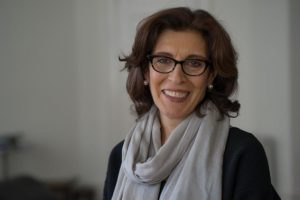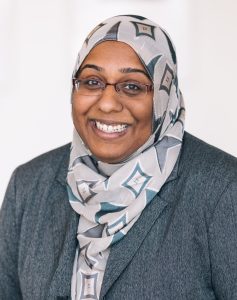 Advisory Board Chair
Advisory Board Chair
Massumeh Farhad
Massumeh Farhad joined the Freer Gallery of Art and Arthur M. Sackler Gallery, the Smithsonian’s National Museum of Asian Art, in 1995 as associate curator of Islamic Art. In 2004, she was appointed chief curator and curator of Islamic art. She is a specialist in the arts of the book from sixteenth-century and seventeenth-century Iran. Dr. Farhad has curated numerous exhibitions on the arts of the Islamic world at the Freer and Sackler, including Art of the Persian Courts (1996), Fountains of Light: The Nuhad Es-Said Collection of Metalwork (2000), Style and Status: Imperial Costumes from Ottoman Turkey (2005-6), The Tsars and the East: Gifts from Turkey and Iran in the Moscow Kremlin (2009), Falnama: The Book of Omens (2009-10), Roads of Arabia: History and Archaeology of the Kingdom of Saudi Arabia (2012), and The Art of the Qur’an: Treasures from the Museum of Turkish and Islamic Arts (2016).
She received her PhD in Islamic Art History from Harvard University in 1987. Her publications include Slaves of the Shah: New Elites in Safavid Iran (2004), Falnama: The Book of Omens (2009), The Art of the Qur’an: Treasures from the Museum of Turkish and Islamic Arts (2016), and A Collector’s Passion: Ezzat-Malek Soudavar and Persian Lacquer (2017).
 ADVISORY BOARD MEMBER
ADVISORY BOARD MEMBER
Qianshen Bai
Qianshen Bai graduated with a bachelor’s degree from Peking University and a Ph.D. from Yale University. He taught Chinese art history at Boston University from 1997 to 2015. Currently, he is a professor and dean of the School of Art and Archaeology at Zhejiang University, as well as director of Zhejiang University Museum of Art and Archaeology. He is the author of Fu Shan’s World: The Transformation of Chinese Calligraphy in the Seventeenth Century (Harvard University Asia Center, 2003), and three monographs in Chinese. He has received fellowships from The John Simon Guggenheim Memorial Foundation (2004) and the National Endowment for the Humanities (2011). He is now conducting a research on Wu Dacheng, a government official, scholar, collector, and painter-calligrapher, in the late Qing dynasty. Professor Bai is also an accomplished calligrapher.
ADVISORY BOARD MEMBER
Kevin Carr
Kevin Carr is the associate professor of Japanese art at the University of Michigan. He teaches all aspects of the history of Japanese art and archaeology, but his research focuses on the visual cultural of popular religious cults of medieval Japan (especially thirteenth-fifteenth centuries). His work engages issues of visual narrative, hagiography, and the construction of history and national consciousness through art. He has also worked on cultural exchanges between Japan and Europe in the seventeenth century and the nineteenth century, the epistemological foundations of medieval art, and the interpretation of material culture in the absence of textual evidence. His current project focuses on communal identities as manifest in images of temple origin stories (engi-e) in fourteenth-century Japan.
 ADVISORY BOARD MEMBER
ADVISORY BOARD MEMBER
Antonietta Catanzariti
Antonietta Catanzariti joined the Freer Gallery of Art and Arthur M. Sackler Gallery, the Smithsonian’s National Museum of Asian Art, in 2016 as a fellow and was appointed Assistant Curator for the ancient Near East in 2018. She served as the Robert and Arlene Kogod Secretarial Scholar from 2018 to 2022. She specializes in the art and archaeology of the ancient Near East and has excavated in Italy, Jordan, Syria, and Lebanon. Presently, she is working in Iraqi Kurdistan, where, since 2015, she has been the director of the Qara Dagh Regional Archaeological Project (QDRAP), which conducts surveys and excavations in the Qara Dagh Valley. At the National Museum of Asian Art, Catanzariti has curated different exhibitions, such as Divine Felines: Cats from Ancient Egypt (for which she was the in-house curator), Shaping Clay in Ancient Iran, and A Glimpse of Ancient Yemen. She has lectured and published on topics related to ancient trade, ceramic economy, landscape archaeology and her current research in Iraqi Kurdistan. She received her BA and MA from the Ca’ Foscari University of Venice, Italy, and a PhD in the art and archaeology of the ancient Near East from the University of California, Berkeley.
 ADVISORY BOARD MEMBER
ADVISORY BOARD MEMBER
Joan Kee
Joan Kee is Professor of the History of Art at the University of Michigan in Ann Arbor. Previously affiliated with the University of Hong Kong and the National University of Singapore, she has written widely on modern and contemporary art in East and Southeast Asia including catalogue essays for the Singapore Biennale, the Korean Pavilion at the Venice Biennale, the Metropolitan Museum of Art, and the Los Angeles County Museum of Art. The author of Contemporary Korean Art: Tansaekwha and the Urgency of Method, and Models of Integrity: Art and Law in Post Sixties America as well as the co-editor (with Patrick Flores) of “Contemporary Southeast Asian Art,” Third Text, Kee is presently writing a monograph on Afro Asian artistic engagements.
 ADVISORY BOARD MEMBER
ADVISORY BOARD MEMBER
Dipti Khera
Dipti Khera is Associate Professor in the Department of Art History and Institute of Fine Arts at NYU. As a scholar of early modern South Asia, with interdisciplinary training in art history, museum anthropology, and architecture, her research and teaching integrate longue durée perspectives and Indian Ocean and Eurasian geographies. Along with specializing in paintings, books, scrolls, and maps, radiating out of northern and western India, she has published on the crafting of colonial taste and global design by nineteenth-century silversmiths in Madras and foregrounded vernacular travel artifacts that reveal global art history’s conceptual blind spots and archival borders in narrating stories of mobility and migration. Khera’s The Place of Many Moods: Udaipur’s Painted Lands and India’s Eighteenth Century (Princeton University Press, 2020) was awarded the Edward Cameron Dimock, Jr. Prize in Indian Humanities by the American Institute of Indian Studies and shortlisted for the Kenshur Prize in Eighteenth-Century Studies by Indiana University. A co-edited volume for Journal18 (December 2021), “The ‘Long’ Eighteenth-Century?” considers from which vantage points, whether local, regional, or transregional, is the eighteenth century long, and to what ends we deploy such visual and material microhistories. Her collaborative work with Rajasthan’s museums and libraries has led to conservation, exhibition, and digital projects, including co-curating with Debra Diamond, A Splendid Land: Paintings from Royal Udaipur (opening at the National Museum of Asian Art in November 2022).
 ADVISORY BOARD MEMBER
ADVISORY BOARD MEMBER
Simon Rettig
Simon Rettig has been the Freer|Sackler’s assistant curator of Islamic art since 2016. Between 2012 and 2016, he was the museums’ curatorial fellow for the arts of the Islamic world. He previously worked at the French Research Institute in Istanbul and the Freie Üniversität in Berlin. Rettig received his BA from the École du Louvre in Paris and his MA and doctorate from the Université de Provence Aix-Marseille I, France.
Rettig has curated the exhibitions Nasta‘liq: The Genius of Persian Calligraphy (2014) and The Prince and the Shah: Royal Portraits from Qajar Iran (2018), and he cocurated with Massumeh Farhad The Art of the Qur’an: Treasures from the Museum of Turkish and Islamic Arts (2016). He has published several articles on the arts of the book from the Islamic world, including the recent essay “A ‘Timurid-like Response’ to the Qur’an of Gwalior, Manuscript W563 at the Walters Art Museum, Baltimore,” in Éloïse Brac de la Perrière and Monique Burési, eds., Le coran de Gwalior: Polysémie d’un manuscrit à peintures (Paris, 2016). He also recently published with Massumeh Farhad A Collector’s Passion: Ezzat-Malek Soudavar and Persian Lacquer (2017). His current projects include the preparation of a monograph on the Freer’s celebrated Khusraw u Shirin manuscript.
 MANAGING EDITOR
MANAGING EDITOR
Sana Mirza
Sana Mirza joined the Scholarly Programs and Publications division of the Freer and Sackler in 2014. She has contributed to various research projects related to Islamic Art and managed digital initiatives, including the online exhibition The Sogdians: Influencers on the Silk Roads. In addition to her work managing Ars Orientalis and other research publications, Sana coordinates the museum’s fellowship programs and scholarly events.
Sana received her PhD in Islamic Art History from the Institute of Fine Arts, New York University in 2021. Her dissertation explores a corpus of Qur’an manuscripts from eastern Ethiopia produced between the seventeenth and nineteenth centuries and their Red Sea and Indian Ocean milieus. She is coediting with Simon Rettig The Word Illuminated: Qur’an Manuscripts from the 7th–17th Centuries (Smithsonian Institution Scholarly Press) and has contributed to the exhibition catalogue The Art of the Qur’an: Treasures of the Museum of Turkish and Islamic Arts. Sana earned her BA in History and Art History with a minor in Islamic Studies from George Mason University and an MA in Art History from the Institute of Fine Arts, NYU.

